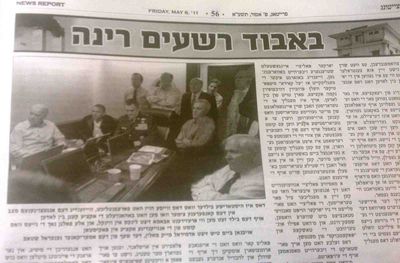Tim, Cindy S., and Kenny V. sent in an interesting story. The Brooklyn-based newspaper Der Tzitung, which targets the Ultra Orthodox Jewish community, published copies of the now-famous photo of President Obama and his staff in the Situation Room during the Navy SEALs operation that killed Osama bin Laden. Here’s the original (via the New York Daily News):
However, the version of the photo that ran in Der Tzitung had been photoshopped to remove the two women in the room, including Secretary of State Hillary Clinton (initially posted at Failed Messiah):
We’ve seen this before. Usually the argument for deleting women or girls from photos is that they are sexually suggestive or show women interacting with men in ways that are considered inappropriate by the Ultra Orthodox. Whether that’s the case here, or whether it was discomfort showing a woman in a position of significant political power, the effect is to rewrite history to erase the role of women in political decision-making.
UPDATE: While this post led to a lot of interesting discussions, some individuals also posted problematic and offensive comments about the Orthodox community. Due to a family emergency I was overwhelmed and distracted and did not monitor the comments closely at the time, and thus those comments have remained up for the past week. I am going to delete some offensive or inappropriate comments, but I apologize that they were left up for so long without any response from me.
That said, a lot of readers made really great comments, both about how we go about being culturally respectful/sensitive but also thinking through issues such as public representation, and that the Orthodox Jewish community is quite diverse and that this newspaper, and the policies it espouses, shouldn’t be taken as indicative of the behavior or attitudes of Orthodox Jews more broadly.

















